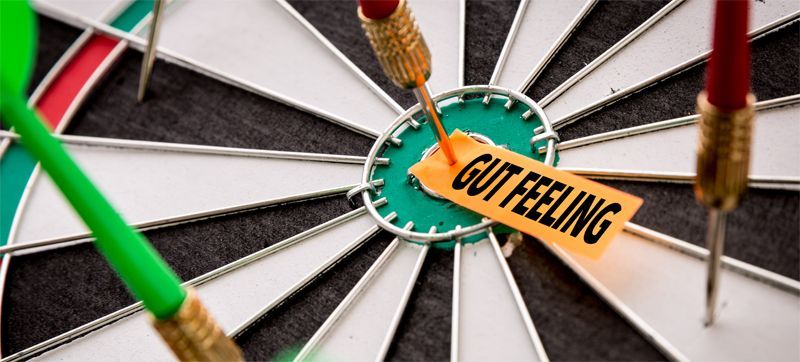The Science of a Gut Feeling
The gut-brain axis connects emotional and cognitive areas of the brain with gut functions. What was once thought to be two distinct systems of the body is now understood to be intricately connected and regulated, with significant consequences for the rest of the body. A healthy gut = a healthy brain and emotional life.
-Dr. Alicia Armitstead
That gut feeling that creeps up at times is more accurate than most people realize. The gut-brain axis is a system of communication between the gastrointestinal (GI) tract and the brain that operates in both directions, responsible for maintaining physiological homeostasis. It connects both the emotional and cognitive areas of the brain with functions associated with the intestines, including immune activation, intestinal permeability, and endocrine signaling.
Bi-directional communication between the gut and brain is primarily facilitated by the vagus nerve, which conveys a wide range of signals between the gut and brain and is involved in various bodily processes, including swallowing, heart rate regulation, and digestion. Other systems also contribute to the gut-brain axis, including the sympathetic nervous system, enteric nervous system, parasympathetic nervous system, endocrine system, and immune system. The gut-brain axis is being increasingly studied for its role in the development, but also the treatment, of inflammatory bowel disease, depression, and post-traumatic stress disorder. Yes, depression and PTSD can be helped if you heal the gut.
The Role of Healthy Gut Microbiome in the Gut-Brain Axis
The gut microbiome is a crucial component of the GI tract and, as such, a critical player in the gut-brain axis. Bacteria in the gut microbiome synthesize and produce important metabolites that affect the brain, including the neurotransmitters dopamine, serotonin, GABA, acetylcholine, and histamine.
These metabolites can signal at the local level or travel to the brain, where they affect signaling and function in brain cells. Other components of the gut microbiome, including healthy fungi, also contribute to the communication along the gut-brain axis.
Bacteria in the GI tract also synthesize compounds that may act as neuro-mediators in the brain, including short-chain fatty acids (SCFAs), aromatic amino acids, and bile acids. SCFAs indirectly affect the gut-brain axis through inducing the release of several gut hormones, including leptin, which interacts with the vagus nerve and receptors in the brain. SCFAs also contribute to the maintenance of physical barriers, including the intestinal barrier, via tight junctions, as well as the blood-brain barrier. Tight junctions are crucial for maintaining intestinal permeability, preventing pathogens from entering the bloodstream and triggering immune and inflammatory responses, including neuroinflammation. In our office, we take numerous steps to help heal the intestinal wall. When it leaks, we refer to it as leaky gut, and a lot can be done with food to help heal it. We also do a lot to help heal a leaky brain.
An imbalance in the gut microbiome's composition, known as dysbiosis, can affect the gut-brain axis and peripheral organs. Unhealthy diet, stress, infections, and antibiotics contribute to dysbiosis, leading to altered SCFA production and gut permeability, which induces systemic inflammation, increases blood-brain barrier permeability, and ultimately results in neuroinflammation, an essential step in the development of neurological conditions such as depression and even Alzheimer’s disease.
Gut Hormones
The gut-brain axis plays a crucial role in the digestion process, regulating the rate of nutrient absorption and the release of gut hormones. Gut hormones are regulatory peptides that influence the control of food intake by regulating satiety, gastric emptying, and energy balance. Signaling molecules released after the ingestion of food are communicated to the brain via the gut-brain axis, and the brain can then signal the release of hunger-regulating hormones, such as ghrelin and leptin, to facilitate the digestion process through the gut-brain axis.
The Gut-Brain Axis and the HPA Axis
The gut-brain axis and the HPA axis (hypothalamic-pituitary-adrenal axis), which coordinates the response to stress, both involve signaling in the brain and the ability to respond to stimuli. Signaling molecules that are generated by the HPA axis in response to stress travel throughout the body and affect the gut microbiome, and conversely, the gut microbiome influences HPA axis response to stress. The vagus nerve plays a crucial role in coordinating the connection between these axes, as it can detect various metabolites produced by gut flora in response to stress and generate a corresponding response in the central nervous system.
Because the HPA axis and gut-brain axis are closely connected, improper activation of the HPA axis affects the gut-brain axis. Dysregulation of the HPA axis can alter the composition of the gut microbiome, negatively affecting intestinal barrier integrity and influencing the metabolism of tryptophan metabolites, which are essential modulators of the gut-brain axis. Improper activation of the HPA axis can also lead to increased intestinal, systemic, and neurological inflammation.
Disorders Related to the Gut-Brain Axis
Because the gut affects so much, we specialize in creating a healthy gut microbiome by first helping patients detox and then killing bad gut flora. After that is accomplished, we then introduce good gut flora. Even when it comes to depression and anxiety, we help patients heal their gut, and they feel so much better!
The composition of the gut microbiome, diet, and other lifestyle factors can all influence emotional balance and mood disorders. However, mood disorders and emotional balance are also linked to changes in gut microbiome and to a poor diet, which can further exacerbate the issue. When patients first come to Healing Arts, they are stuck in a cycle where they don’t feel good, so they eat poorly and end up feeding the bad gut flora that grows and continues to make them feel bad. Stopping this cycle is the first step we must take.
Probiotics
Treatment with probiotics has been shown to decrease stress-induced inflammatory responses, reducing symptoms of stress, including anxiety- and depression-like behaviors. Probiotics can restore neuroplasticity in some regions of the brain, as well as restore intestinal barrier integrity and help regulate the HPA axis. This means that not only does it work in the gut, but also in the brain. Probiotics with anti-inflammatory effects that may be useful in treating patients with psychiatric disorders have been given a new grouping, called psychobiotics. There are numerous types of probiotics, and determining the specific one for your body through muscle testing is crucial.
Dietary components
Diets high in saturated fats, including the Standard American Diet, can lead to gut microbiome dysbiosis and obesity, characterized by high levels of inflammation. This can lead to changes in neurotransmitter metabolism, which in turn further impact the gut-brain axis. A high-fat diet may also lead to impaired neuroplasticity in key brain regions, compromising the intestinal barrier and mucus layer of the gut.
Conversely, the Mediterranean diet, rich in fruits, vegetables, omega-3 fatty acids, nuts, whole grains, and lean protein foods, provides many dietary compounds that support both brain and gut health. If you aren’t going to get muscle tested for your specific diet, then you may want to consider the Mediterranean diet. A Mediterranean-style diet can reduce intestinal inflammation, cognitive impairment, and risk of certain neurological diseases. The diet is also full of dietary fiber, which helps promote SCFA production, increases the diversity of the gut microbiome, and inhibits neuroinflammation induced by a high-fat diet. Healthier diets also tend to contain more fruits and vegetables, which are naturally higher in prebiotics and polyphenols. Polyphenols exert anti-inflammatory and antioxidant effects and can also modulate the gut microbiome.
Exercise
Engaging in regular exercise, including aerobic exercises and yoga, supports the health of the gut-brain axis. Exercise improves cognition and can improve symptoms of both mood and psychological disorders. It can also enhance the diversity of the gut microbiome, leading to an increase in SCFA production, which promotes the healthy functioning of both the gut and brain, thereby decreasing depression and anxiety, and improving HPA axis balance.
The gut-brain axis connects emotional and cognitive areas of the brain with gut functions. What was once thought to be two distinct systems of the body is now understood to be intricately connected and regulated, with significant consequences for the rest of the body. A healthy gut = a healthy brain and emotional life.
Please Share this Blog Post













